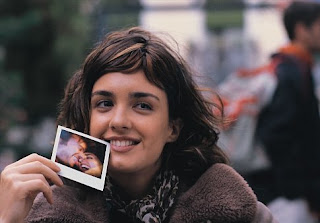I was impressed by the use of colour and lighting in the film.
The film starts with a father's account of what happened to his daughter. It is not a beutiful history. There is soft quality of the light and top lighting here. During all the scene, the light only comes from the chandelier of the room and from the outside, through the gaps of the shutter. It is a very dark scene (tense situation) that contrast with the hard light in the wedding scene (a joyful day).
-Some day, and that day may never come, I will call upon you to do a service for me.
There is a lot of scenes throught the film where key light produces a very hard light. So, we have faces divided into shadow and light. The scenes where family appears are soft. This is because there are two sides in these men's lifes. This dichotomy darkness/light encapsulates the figure of Vito Corleone (Marlon Brando). The "job" is hard and they may be criminals and probably murderers, but at the same time they are loving fathers and they just do it because their family. That is the most important thing is their lifes.
A good-natured grandfather.. or not?
This film is about a family of the Italian community in USA. Well, also about the Mafia controlled by Italian families. As we can see in the scene of the wedding, they dress like American, but they keep following Italian traditions.
The Michael's (Al Pacino) flight to Italy shows the viewer the origins of this family. The return to origins is a great excuse to compare the US and Italy. Tradition, people, social conventions, customes.. everything is different.
Music has an important role. It gives importance to the fragment in which it appears and also an emotion of homesickness.
I liked the it very much. I think it is one of those films you do not have to miss if you want to know a little of the history of cinema.
Curiosities: There is allutions to this film in a lot of films and tv programmes. A lot of Mafia films, like Prizzi's Honor (John Huston, 1985); Requiem for a dream (Darren Aronofsky, 2000), and some tv programmes as The Sopranos and The Simpsons.





























